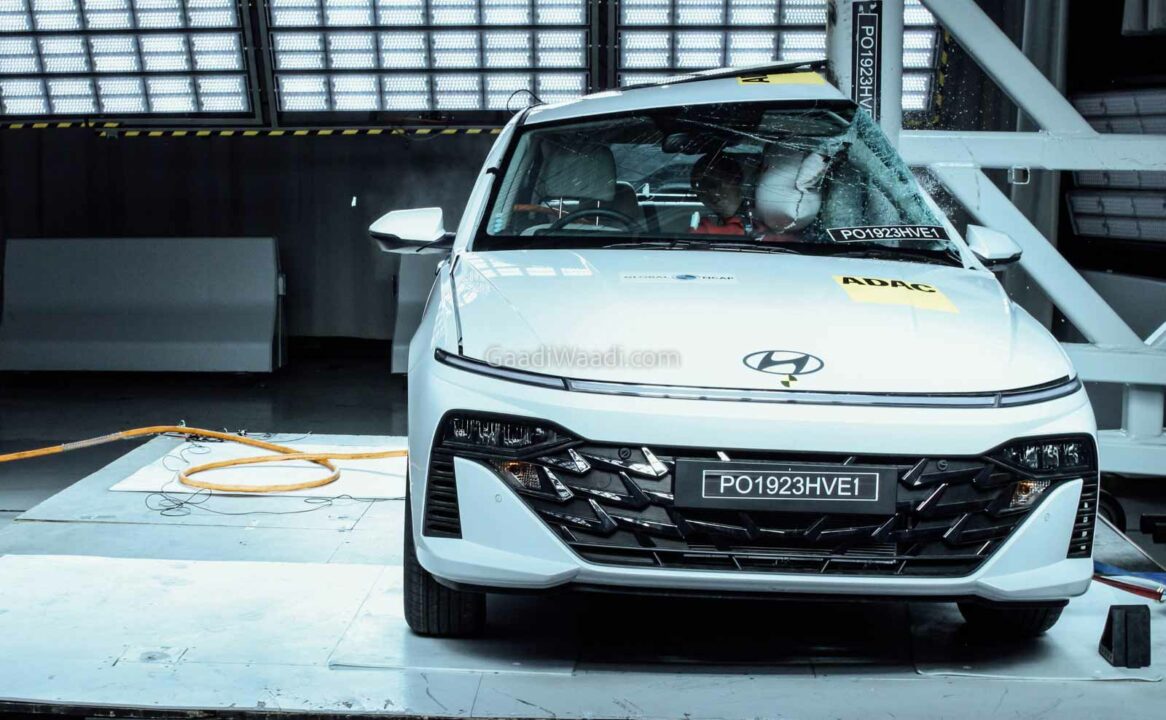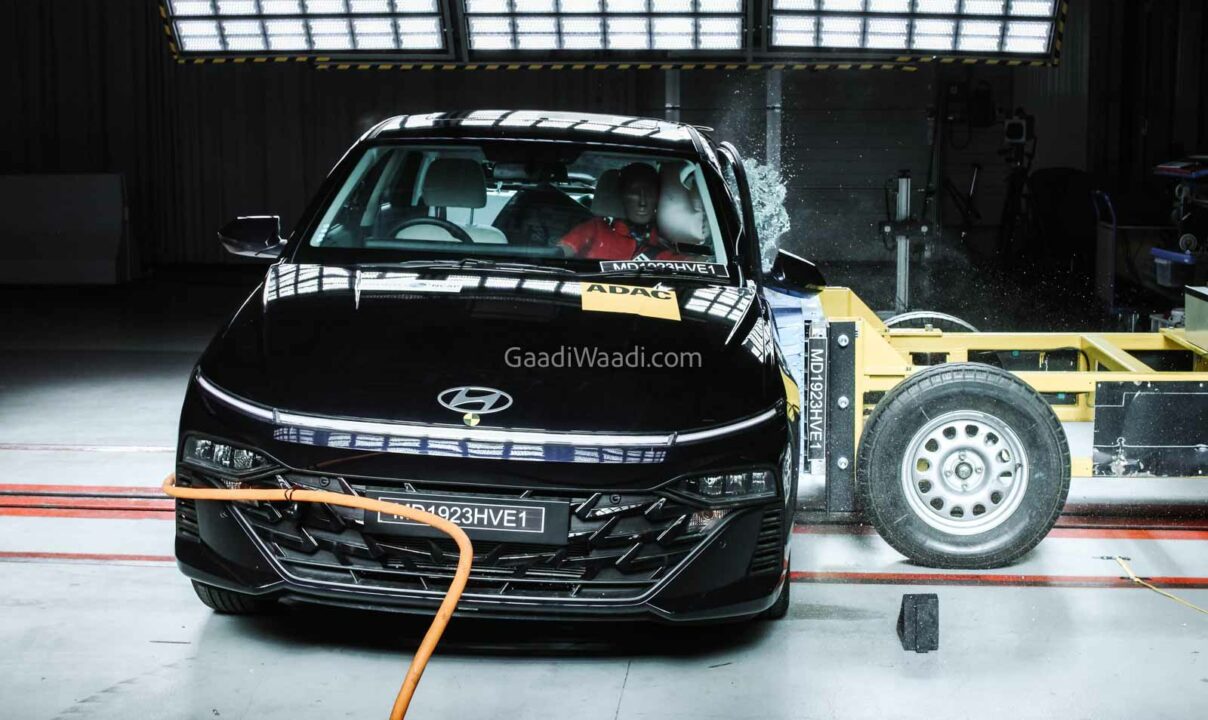
Global NCAP has noted that the new Hyundai Verna was tested in compliance with 2022 assessment protocols and as a voluntary test
Hyundai introduced the all-new Verna a few months ago in India and it has been well received by customers. The much-awaited Global NCAP ratings are out for the midsize sedan as it has achieved full marks in both adult occupant and child occupant tests. Global NCAP has noted that the Hyundai Verna was tested in compliance with 2022 assessment protocols and as a voluntary test.
The voluntary test is one of the final results in the #SaferCarsForIndia campaign ahead of Bharat NCAP coming into effect later this year. The assessment team evaluates frontal and side impact protection for all models along with ESC (Electronic Stability Control). In addition, pedestrian and side-impact pole protection assessments are required for vehicles scoring the highest star ratings.
The base variant of the Hyundai Verna was tested with six airbags and ESC as standard. Amidst receiving five stars for adult and child occupants, the structure was rated unstable. After the side impact test, a Child Restraint System (CRS) failure was noted as well but the CRS manufacturer identified this as a one-off. To verify the claim, Global NCAP conducted another higher energy side impact test and the CRS showed no further sign of failure.
Alejandro Furas, Secretary General of Global NCAP said, “The effort to bring these improvements from the basic version is a remarkable step forward. We encourage Hyundai to continue in this line and bring the highest safety performance to the most affordable models and improve the availability of ADAS technologies in its entire model range worldwide.”
In the frontal impact test, the protection offered to the head and neck of the driver and passenger was found to be good while the driver’s chest showed marginal protection and the passenger’s chest showed good protection. The driver’s and passenger’s knees, on the other hand, showed marginal protection as they can impact dangerous structures behind the fascia. The driver’s tibias showed adequate protection and the passenger’s tibias showed good and adequate protection.
The footwell area was rated as unstable as well as the bodyshell and it is not capable of withstanding further loadings. The head, pelvis and abdomen showed good protection in side impact tests while the chest showed adequate protection. The curtain airbags are standard and meet the fitment requirements showing good protection to the head and pelvis, marginal protection to the chest and adequate protection to the abdomen in the side pole impact.
ESC is fitted as standard and the performance shown in the test was acceptable according to Global NCAP’s latest requirements while the SBR is standard in all seating positions but only meets the requirements in the front positions explaining the new-gen Verna receiving five marks. The child seat for the 3-year-old was installed rearward facing using the i-size anchorages and a support leg and it was able to prevent head exposure during the frontal impact offering full protection.
The child seat for the 18-month-old was installed rearward facing using the i-Size anchorages and a support leg and it was able to prevent head exposure during the frontal impact offering full protection. In the side impact test, both CRS’ offered full side impact protection. The car offers 3-point belts in all seating positions as standard in all versions. The marking warning consumers about rearward-facing CRS in the front passenger position fulfils the requirements but it does not offer the possibility to disconnect the passenger airbag in case a rearward-facing CRS will be installed in this position.


